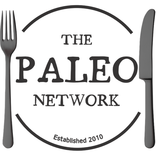Is Your Deodorant Toxic?
When you put so much care and effort into your Paleo nutrition and fitness, are you equally aware of the health and beauty products you use, like your deodorant?
Deodorant and antiperspirant are something most people use – and apply directly onto their skin every day, but is commercial deodorant safe?
Shop brought deodorants often contain parabens – a chemical that has been associated with cancers. Deodorants often also contain aluminium, which is used to stop perspiration – but has been linked to dementia, brain disorders and breast cancer.
It is also common for deodorants to contain alcohol, which can be drying for some skin types.
While aluminium free and paraben free deodorants are available, these can still come with added alcohols or other chemicals that could build up in the body. There are many natural deodorants available, for example made from crystal stones. However – you could make your own natural alternative!
Deodorant For Women
Ingredients:
- Five teaspoons of distilled witch hazel
- 5mls (0.17 fluid ounces) of vitamin E oil
- 10 – 20 drops of geranium essential oil
- 10 – 20 drops of ylang ylang essential oil
- 5 drops of clary sage
- One small spritzer bottle
Directions:
Add the witch hazel into a small mixing bowl and then add in the vitamin E oil and blend it together using the end of a pipette, a teaspoon, or a small wooden spatula.
Next add the essential oils and remember to build them gradually until you have the desired scent. Once ready, pour into the spritzer body and use when need. This can be stored in the fridge for a cooling effect.
Deodorant for Men
Ingredients:
- 5 teaspoons of distilled witch hazel
- 10 – 20 drops of sandalwood essential oil
- 10 – 20 drops of pine essential oil
- 5mls (0.17 fluid ounces) of vitamin E oil
- One small spritzer bottle
Follow the directions for the deodorant for women.
If preferred, just use the sandalwood essential oil on its own.
Solid Deodorant
Warning: Take care when heating and pouring the cocoa butter to ensure it doesn’t get on your hands as it will be extremely hot.
Ingredients:
- 30g (1.05 ounce) of cocoa butter or shea butter
- Essential oils as listed in the above recipes
- 5mls of vitamin E oil
- Square soap mould or massage bar mould
Directions:
Melt the butter in a saucepan by lightly heating it on a hob or in a microwave oven until melted.
Stir in the vitamin E oil and then added in the essential oils.
Pour the mix into soap or massage bar mould. For a smooth bar, use a soap mould.
Leave the bar to cool overnight and it will be ready to use the next morning.
Bicarbonate of soda can also be used for a simple, effective deodorant.
Note: Pregnant women should take advice before using essential oils.
Do you use commercial deodorant or antiperspirant – or perhaps you go without entirely? I’d love to hear your thoughts on this – and whether you’d try making a natural alternative – in the comments below.







